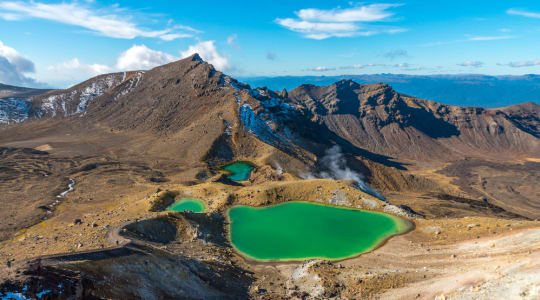
Tongariro National Park is a UNESCO World Heritage site located in the central North Island of New Zealand. Established in 1887, it is the oldest national park in New Zealand and the fourth oldest national park in the world. The park covers an area of 795.98 square kilometers and is dominated by three active volcanoes: Tongariro, Ngauruhoe, and Ruapehu.
Tongariro National Park is known for its dramatic landscapes, including volcanic peaks, lakes, and hot springs. The park is also home to a range of unique flora and fauna, including the endangered kiwi bird, native plants such as the mountain flax and tussock grass, and the blue duck, one of the rarest ducks in the world.
The park offers a range of hiking and walking trails, including the Tongariro Alpine Crossing, one of the most popular hikes in New Zealand. This 19.4-kilometer trek takes hikers across volcanic terrain, past hot springs and lava flows, and offers spectacular views of the surrounding mountains.
Other popular activities in the park include skiing and snowboarding at Whakapapa and Turoa ski resorts, fishing in the park's rivers and lakes, and scenic flights over the park.
Tongariro National Park is also of significant cultural importance to the Māori people, who have lived in the area for over a thousand years. The park is home to several important cultural sites, including the volcanic peaks of Tongariro, Ngauruhoe, and Ruapehu, which are considered sacred by the Māori people. The park is also home to several historic huts and shelters, including the Mangatepopo Hut, which was built in the 1920s and is now a popular destination for hikers.